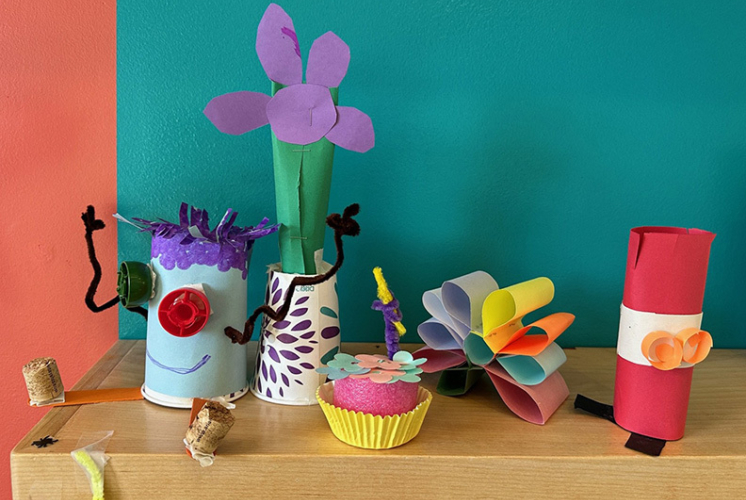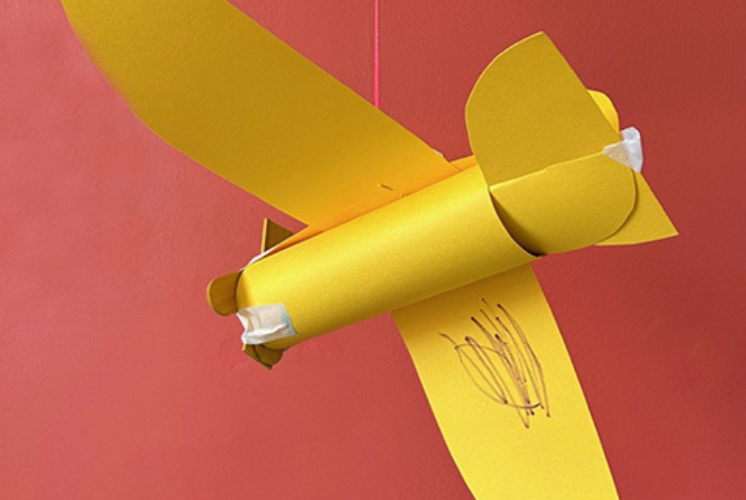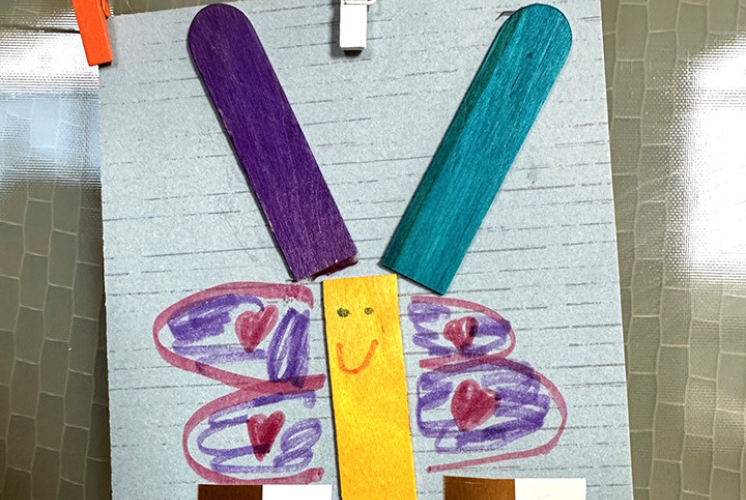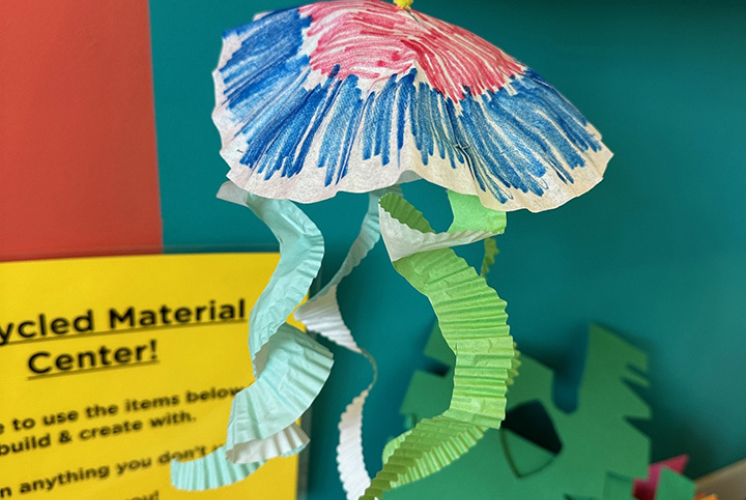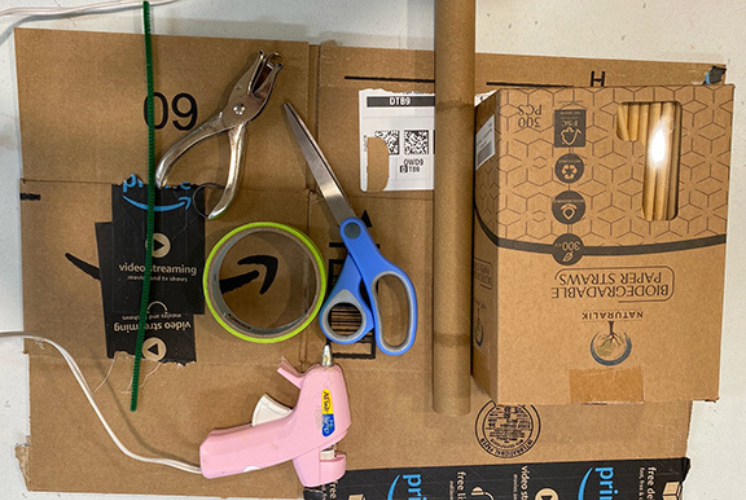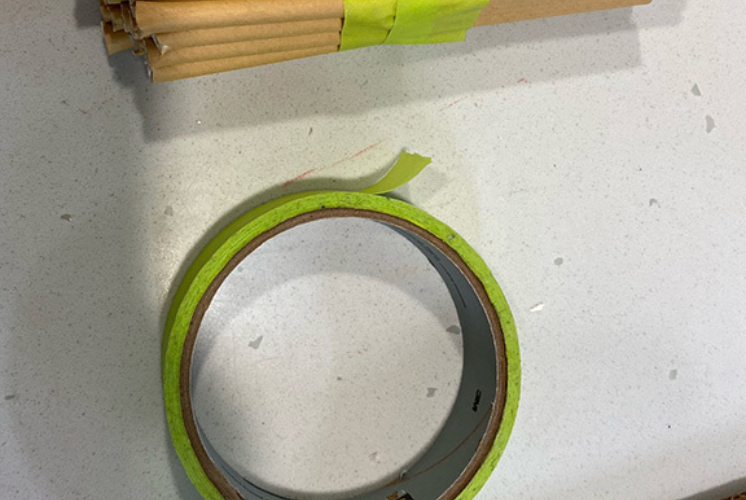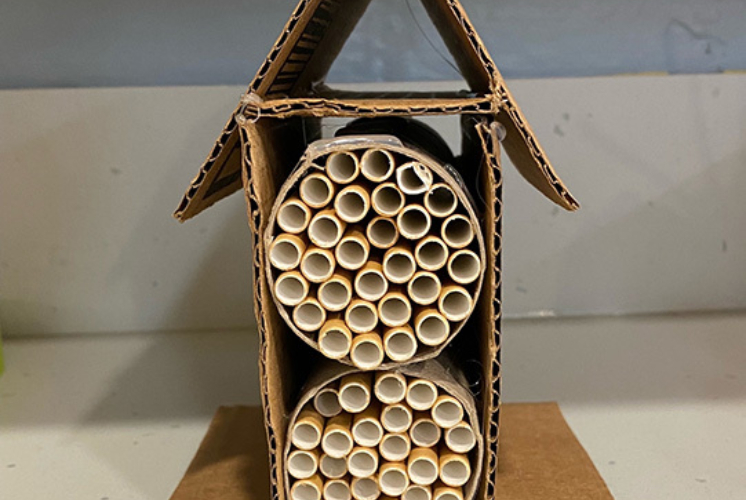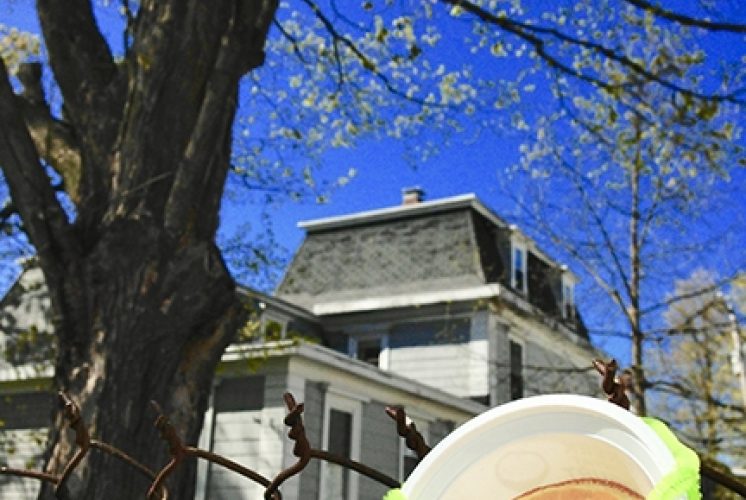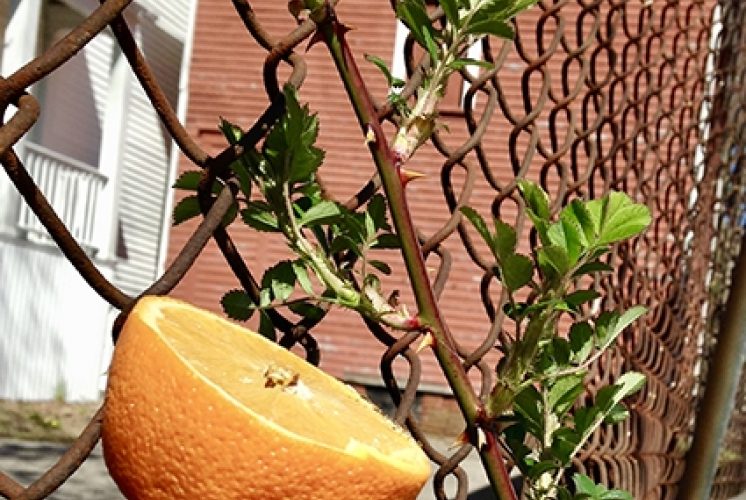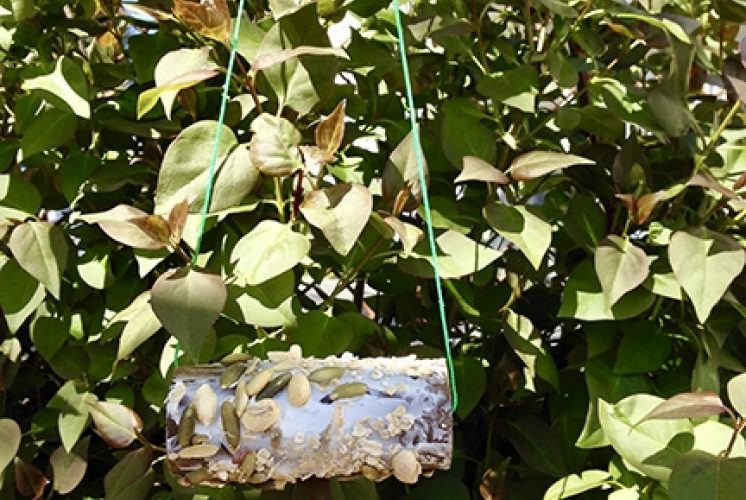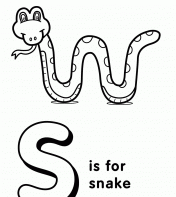The Museum Blog
Category: Nature
Make Recycled Art This Earth Day
Did you know April 22nd is Earth Day? In 1970, people organized a national demonstration to raise awareness for environmental issues. Rallies were held across the country, before the end of that year the government had formed the Environmental Protection Agency to help make sure our planet was taken care of as best that we could for years to come. By 1990, Earth Day was being celebrated by over 140 countries around the world.
You might have heard the phrase, REduce, REuse, REcycle, as a way to help explain ways we can help the Earth and keep the environment clean. This is something we can even do when creating artwork! In our Muse Art Studio we are creating Recycled Art, but it’s also something you can do at home!
To start all you need are:
Some recyclable or reusable items, like bottle caps, cardboard, paper cups, pipe cleaners, or cupcake liners
You can add markers, scissors, glue, or staplers to help decorate your art
You can make something to use later, like an airplane to play with or a bird feeder. Or you can make something abstract with these items. The great thing about recycled art is that it can be anything you want. Making art in an open ended way like this is called process art. It’s a great way for kids to explore self-expression and help with fine motor skills.
Making recycled art during April is a great way to teach kids about recycling and reusing everyday items that might otherwise end up in the trash, and opens conversation with your child to talk more about Earth Day and why it is important!
DIY Bee Condo
By Megan Beach, CMNH Educator
Did you know that you can build a homemade house for bees to live in? Although bees will make their own hives in places like hollow trees, or by burrowing in the ground they also will move into a bee condo, that you can make at home with just a few materials.
What you need to make a bee condo:
- Cardboard pieces, or heavy card stock
- Empty paper towel roll cut in half
- Paper straws (important that they are not plastic)
- Scissors
- Masking tape
- Hot glue gun (Make sure to get a grown-up to help)
- Hole punch and pipe cleaner or string
Bees find a house made out of a bundle of paper straws with one side blocked off to be a welcoming place for a home. They also prefer darker colors for their houses (it reminds them of trees) so using a brown cardboard box or dark paper works the best.
Instructions:
- Trim straws to the length of your cut paper towel roll and bundle them together with tape.
- Once straws are bundled and taped fill the tube with them and secure with glue if needed.
- Cut pieces of cardboard to fit securely around tubes in the shape of a house or tent to your liking and use the hot glue gun to fasten them together.
- Make sure to add a piece of cardboard to the back to cover one side of your bee condo.
- Use hole punch to string the pipe cleaner through the top of the house for easy hanging.
Optional:
Add moss, leaves or pinecones to the roof or any empty areas of your bee condo to help them feel more at home!
If bees do make a home in the condo be sure to not disturb them. Leave the bees alone so they can pollinate plants for us and make honey!
Sunflower Exploration
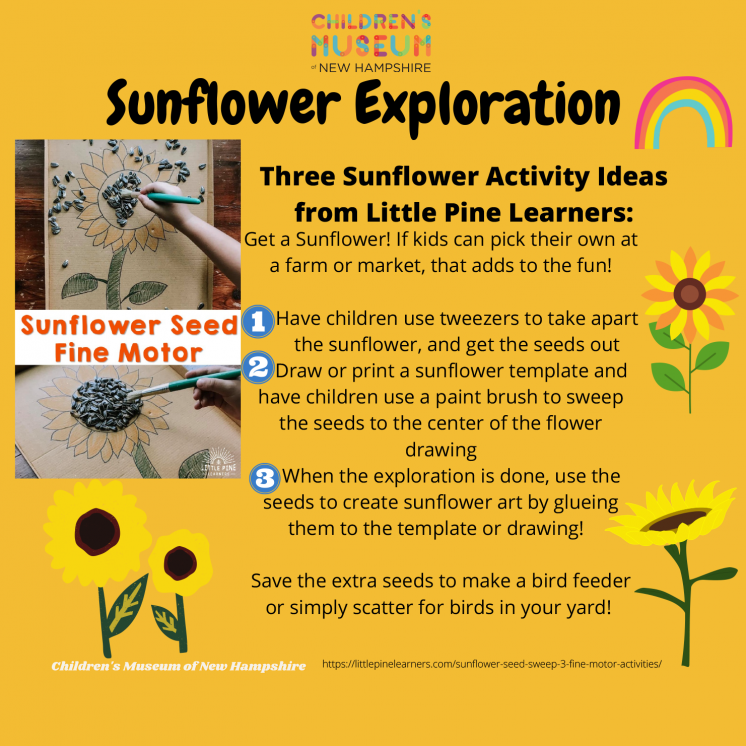
Three Sunflower Activity Ideas from Little Pine Learners
Get a Sunflower! If kids can pick their own at a farm or market, that adds to the fun!
- Have children use tweezers to take apart the sunflower, and get the seeds out.
- Draw or print a sunflower template and have children use a paint brush to sweep the seeds to the center of the flower drawing.
- When the exploration is done, use the seeds to create sunflower art by glueing them to the template or drawing!
Save the extra seeds to make a bird feeder or simply scatter for birds in your yard!
Learn more Play Based Learning tips here on our website, on Pinterest, or on YouTube.
Backyard Birding
Spooky Science: Bat Rockets
by Colie Haahr, CMNH Educator
We did a mini rocket experiment for this Spooky Science video, and made a bat straw rocket. You can try both at home! For the mini bat rocket, it's important to have supervision and assistance from a grown up. This experiment uses medicine, and children should not try this without help from a grown up.
Bat Rocket Experiment:
Materials needed:
- Alka seltzer or similar effervescent medicine
- A film canister with a tight fitting lid
- Water
- Optional: a bat to add to your rocket. We used a laminated picture in the video
Set up:
Set up outside or use a tray indoors in an area that's easy to clean up
Experiment:
This experiment happens quickly! So make sure all eyes are on the rocket once the ingredients are inside.
Break off a piece of the alka seltzer and place it inside the film canister. Add water filling the container less than half way. Quickly replace the lid of the canister, and flip it over so that the lid is on the ground (or tray). Wait less than a minute, and the canister will launch into the air!
How does it work?
The alka seltzer mixes with water and creates bubbles. Another way to describe it is that a solid and a liquid mix together and create a gas. In the small canister there is only so much space for the water and the bubbles to fit, so the pressure from the bubbles pushes the canister up into the air! The bubbles are carbon dioxide gas, and as the gas is trying to escape and has nowhere to go, it pushes the lid off of the canister. Since the canister was placed upside down, the canister flies up into the air rather than the lid just flying off (that will happen if the canister is placed right side up!). This experiment is similar to a baking soda and vinegar experiment, and that's because some of the same ingredients are in the alka seltzer- citric acid and sodium bicarbonate.
Bat Straw Rocket Activity:
For a less messy version of bat rocket fun, try making a bat straw rocket!
Materials needed:
- Cardstock
- Bat template
- Pipette
- Tape
- Scissors
- Straw
Instructions:
- First, print the bat template on the cardstock, or use a permanent marker to draw a bat
- Color the bat in with markers or crayons, and cut it out
- Cut a pipette so that the larger end can be used for the rocket (the part you squeeze)
- Tape the pipette piece onto the back of the bat cut out
- Place the pipette piece onto a straw- this can be a reusable straw, paper straw, or plastic straw
- Blow into the straw with is angles slightly upward- the bat should "fly" off of the straw
How does it work?
The pipette piece is closed off at the top, so when you blow into the straw, the air has nowhere to go. The pressure from blowing into the straw makes the bat fly off the straw, and go through the air for a bit!
We first learned about this activity from Bug and Buddy, and they have a free printable bat template that can be used for this project. There are also some great pictures of the process to make the rockets, and a video. See the link in the reference section below! This activity involves pressure and forces similar to the bat rocket experiment, but it is less messy and can be tried over and over again. Have fun!
References:
https://www.imaginationstationtoledo.org/education-resources/diy-activities/alka-seltzer-rockets/
Backyard Birding- Make a Bird Feeder
By Colie Haahr, CMNH Educator
Backyard birding is a great way for kids to practice making observations, and to learn about ecology and biology! Learn how to make 2 easy bird feeders to attract special birds to your yard, especially Orioles, who like oranges and other fruits.
If you have not tried backyard birding before, there are a few things to think about before you start. First, setting expectations for seeing birds. Even if you do a great job setting up a feeder with food that birds like, you may not see birds right away, or draw in unique birds right away. It’s a good idea to let kids know they may not see birds as soon as the feeder goes out. When scientists do research, they do a lot of observation and patient waiting to see results!
The food you provide is important, too, and birds need water! It may take some time to establish your backyard as a consistent food source for birds, so don’t give up if birds do not appear right away. All animals need water, so if you are able to provide clean water for your backyard animal friends, then you may see more of them more often. Birds do not have hands, obviously, so they use their beaks for many different things the way we use our hands. Different birds have different beaks that are adapted to where they live and what they eat. There’s a great book called Beaks! by Sneed B. Collard III that helps to illustrate this to kids. When you put out food for the birds keep in mind not only what they eat, but how they eat it and whether they can access it with their beaks.
Something else to keep in mind is the season. Some birds are only going to be around for a few months of the year because of migration, and others will be around throughout the year. Some birds migrate, or move, to warmer areas for the winter so that they can find more food. Migrating is a behavioral adaptation, or change in behavior, that helps an animal to survive. Some foods are harder for birds to find in the winter, like insects and fruits. The temperature gets too cold for some birds, but surprisingly many birds can withstand very cold winter temperatures. Spring is a great time to observe birds, and you may even get to see some nests being built.
Location is important, too. If there is not a lot of natural habitat near your backyard, you may see fewer bird species. To see “new” or special birds, you can try visiting their habitat, like a local conservation area. The Bellamy Preserve in Dover is a great place to see birds, and since there are open fields as well as the bay nearby, you can see shore birds and forest birds on the same trip. Ideal bird habitats may also be ideal tick habitats, so be mindful of your clothing choices, and in the springtime boots will be necessary for the mud.
Finally, bird identification can be really tricky even for grown ups! Instead of focusing strictly on bird identification, try setting up an observation chart that kids can use independently. This chart can include the day, time, number of birds, and what the bird was doing. For example, at lunch time Sally Scientist saw one bird that was hopping, and three birds that were flying. She didn’t see any birds that were eating or drinking, so they must not have known it was lunch time. All silliness aside, noticing whether animals eat when people eat is a great observation! A chart that kids can check off might work well:
Sally Scientist’s Observations:
Day/Time | Birds Hopping | Birds Flying | Birds Eating | Birds Drinking |
Monday lunch | / | /// | 0 | 0 |
Making the Bird Feeders:
In the video you will see 2 different ways to make a bird feeder. One style of feeder is made by adding seeds to a paper towel roll or a pine cone, and it is a little messy, but can be done outdoors to cut down on spills. The second style of feeder is made by using an orange as the food rather than bird seed, and this is done to attract Orioles because they like to eat fruit. This can be done by carefully attaching an orange half to a branch, or creating a small feeder that fits an orange inside of it, and has a perch for the birds to sit on while they eat.
Materials Needed:
- Oranges
- Seeds
- Paper towel tube
- Peanut butter, sun butter or crisco
- String
- Pipe cleaners
- Hole punch
- Small jar or yogurt cup
- Stick for a perch (sturdy)
- Optional: jelly - this can be messy, and less messy oranges work well!
Directions:
- Tube Feeder: The first feeder design is simple, but can be a little messy. For this feeder, you will need nut butter or crisco, a paper towel tube, string, and bird seed
- Use a tray or plate to hold the bird seed (a small mound should work)
- Cut a paper towel tub in half so that one tube makes two feeders
- Carefully add nut butter or crisco to the outside of the paper towel tube.
- Once the tube is mostly covered, gently roll it in the birdseed. The birdseed will stick to the tube, but keep it on a work surface like a plate until it’s time to hang it up
- Use a string to hang up your feeder by threading it through the tub and tying the two ends in a knot. Hang your feeder up in a tree
- Orange Feeder: For this feeder, you need an orange cut in half, sticks, a container, hole punch, and string to hang it up. The orange feeder is designed to attract Orioles because they enjoy eating fruit, especially oranges! Orioles also like jelly (not jam), but it is a little stickier and messier, so we suggest trying oranges first.
- First, cut the orange in half so that the birds can get to it
- The easiest way to make an Oriole feeder with oranges is to use a sturdy branch and poke the orange half directly onto a tree
- Another method is to use a small container, like a yogurt cup, to hold the orange. Use a stick to add a perch, add holes with a hole puncher, and use a pipe cleaner or string to hang it up.
Links:
https://www.allaboutbirds.org/news/types-of-bird-seed-a-quick-guide/?pid=1142
https://www.audubon.org/news/make-orange-feeder-orioles
https://www.allaboutbirds.org/guide/Baltimore_Oriole/lifehistory
https://feederwatch.org/blog/one-peanut-can-go-a-long-way-for-a-carolina-wren/
Up-Cycled Planters
By Colie Haahr, CMNH Educator
This is an easy, low-mess art project that kids can work on independently. Use old containers and washi tape to make an “up-cycled” planter. What is up-cycling? It’s using materials that would otherwise be discarded to make something new. We do many up-cycling activities at the museum to help reduce waste, and to allow kids to be creative with their projects by challenging them to think of new uses for things.
This project provides a good opportunity to talk to kids about reducing waste, and some ways to do that at home. Up-cylcing is just one thing kids can do to help keep the earth healthy, and it’s a great way to cut down on art supplies and packaging if you are using things you already have. The book Not For Me, Please! I Choose to Act Green, by Maria Godsey, is a nice story to read with kids that shows them some concrete choices they can make to help reduce waste. We recently added this book to our collection at the museum.
This is also a great project if you would like to give someone a hand made gift without getting out paints or any messy supplies! You can use the planter to grow something from seeds, or you can use it to put a small houseplant inside.
Materials Needed:
- Empty play dough containers with lids
- Or: A different type of container that is safe to use
- Washi tape
- Optional: scissors
- A house plant, or soil and seeds for planting
Directions:
- The first step is to make sure the container you are using is safe to use and clean. Play dough containers work well. Be sure there are no sharp edges, and carefully supervise if you choose to use glass. Mason jars and other thick glass containers do not break easily
- If you are using a plastic container, you may opt to poke a hole in the bottom with scissors for drainage for your plant. This step should be done by an adult
- Use washi tape to decorate the outside of the container by carefully adding it one strip at a time
- If you want to plant something, add soil and plant the seeds according to the instructions on the seed package.
- If you want to add a houseplant that is already growing, carefully place it inside
- If you are using a play dough container, use the lid to catch extra water under the planter
- Ask: what three things do plants need to grow?? They need soil, sunlight, and water! Place your plant in a spot where it can get some sun, and be sure to water it!
There are more up-cycle project ideas on the museum’s Pinterest account:
Links:
Check out some of our Educator's Favorite Up-Cycle Projects over on Pinterest:
https://www.pinterest.com/kidmuseumnh/cmnh-educators-picks/upcycle-projects/
Blog post that inspired the planters:
Make a Bird Kite!
by Meredith Brustlin, CMNH Educator
The craft I have to share with you today is making a bird kite! This is a really simple activity that you can do with a handful of household items - and it will (hopefully) supply your little ones with a whole bunch of fun.
This awesome activity was found on www.krokotak.com - browse their website for a variety of other fun activities that use simple materials you can find at home, mostly paper!
Materials Needed:
- Piece of 8.5 X 11 paper
- 2-3 Sticky notes
- Or pieces of colorful scrap paper and a glue stick or tape, I like the sticky notes because they are self adhesive!
- Stapler, scissors, hole punch
- Markers, stickers, any other decorations you’d like
- String/ribbon/yarn
Instructions:
- Fold a piece of paper in half
- Gently “swoop” down both sides to form the wings of your bird and attach with one staple
- Punch a hole on the bottom for the kite string
- Cut a sticky note to make a beak and tail feathers--feel free to add other decoration using markers
- Add some sticker eyes
- Attach the string - you’re ready to fly!
GAME: Pattern Snake Hide and Seek
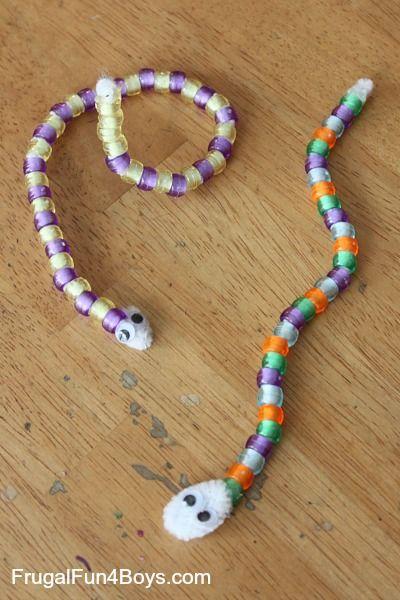
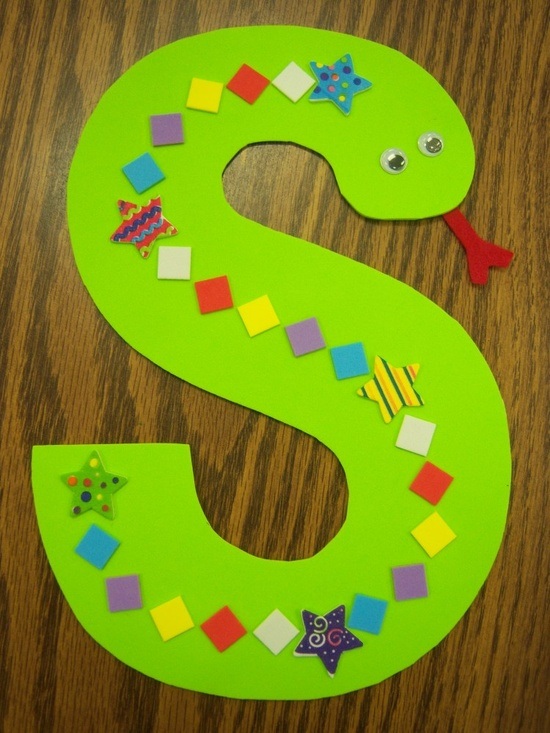
By Colie Haahr, CMNH Educator
This is an active game, but can be done with no running, indoors or outdoors!
Kids love hiding things and finding things, so this is a game that can last for quite a long time, and can be played with just two people or more.
Set up: First, have each player create a snake. You can use pipe cleaners and beads to make a pattern snake. If you do not have materials available to make a pipe cleaner snake, you can color a snake instead by drawing a snake, having your child draw a snake, or using a template.
Game play: Once everyone has decorated or put together a snake, take turns hiding and finding them. There are a few different ways to do this. If younger kids are playing with older kids, a variation that works well is to have a grown up hide all of the snakes, and kids can search for and find only their own snake. This makes the game more fair in that one person will not find all of the snakes right away.
Rules:
- Use your own house rules for hide and seek: this usually includes no peeking while someone is hiding or hiding items!
Explore more:
Add to the fun: have a “pattern pageant” with a grown up as the judge. Inspect the patterns, ask kids to come up with hidden talents for their snakes, and choose a snake as the winner. Maybe it’s the snake that would blend in best in the natural world, the one with the best pattern, or the child who didn’t do so well in the hide and seek game ;)
Talk about why animals have patterns in nature. Usually, this is to send a message to other creatures, such as “I’m dangerous!,” or to help the animal blend in to stay safe from predators. Some animals have patterns that mimic other things, allowing the animal to appear larger than it really is, or blend in with a different group of animals. Elementary aged kids could do some independent research to see who can find the animal with the best camouflage!
Try this printable paper chain python activity:
If you do not have a printer you can make a paper chain by simply cutting up strips of construction paper or copy paper.
Try this printable spiral snake:
Kids can color it in, but may need help from a grown up to cut it out. These would be neat to hang from the ceiling once completed!
This is a very similar activity, but involves finger painting the snake to create a pattern:
You could also make a pattern like this using the CMNH Wacky Art bubble wrap painting method.

